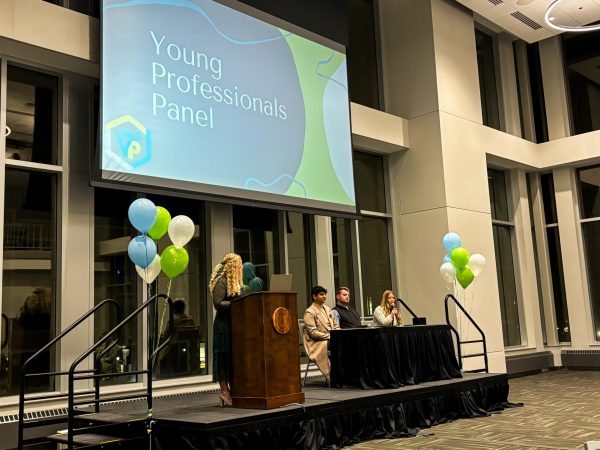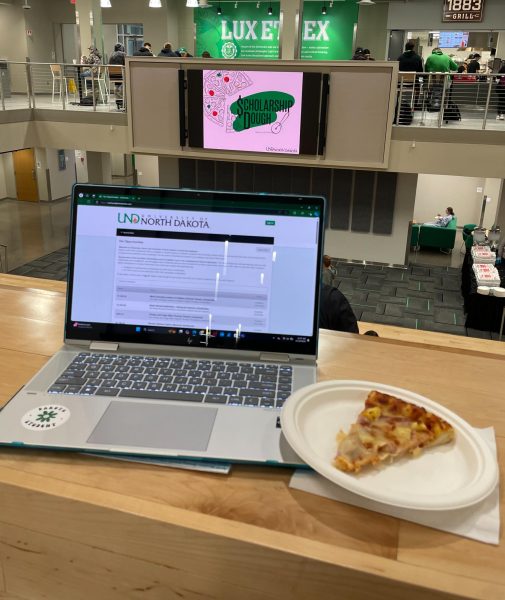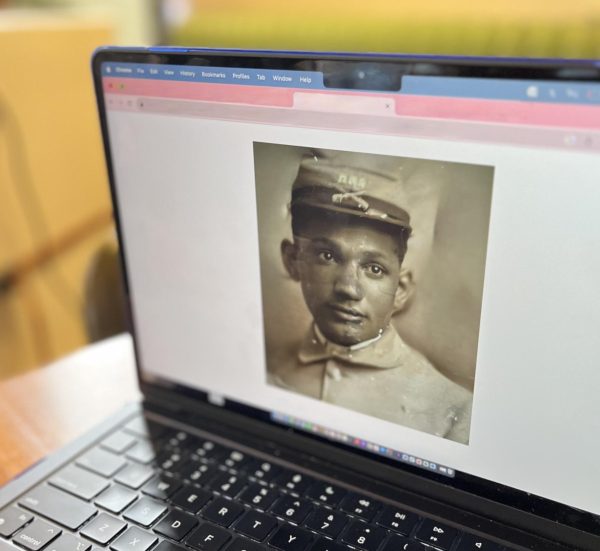Alumnus analyzes artificial gravity
Jon Rask presents second lecture in Space Studies Colloquium series.
UND alumni Jon Rask discusses artificial gravity and the possibility of a Mars flyby. Photo by Chester Beltowski/The Dakota Student.
Making space flight healthier for astronauts is Jon Rask’s job.
Rask — who earned a Space Studies Master of Science degree from UND in 2001 — works as a life scientist in the Space Biosciences Divison at NASA Ames Research Center in California.
He gave the second presentation in the Spring 2014 Space Studies Colloquium Series “Human Flyby Missions to Mars” Monday in Ryan Hall. The topic of Rask’s presentation was “Artificial Gravity as a Human Health Countermeasure for Long Duration Space Flight.”
Rask branched off the first colloquium talk that was given a week earlier by UND Professor Michael Gaffey, who spoke about the possibility of a manned Mars flyby mission in the near future.
According to the Inspiration Mars Foundation website, this type of space mission would take 501 days to complete.
The astronauts on this aircraft would be exposed to the harmful effects of spaceflight for much longer than any mission in the past.
Jon Rask described how today’s in-flight countermeasures do not fully protect astronauts from risks such as cardiovascular problems, bone or muscle loss and vision issues.
Rask worked on research teams with NASA that explored artificial gravity as one solution to counteract the effects of going into space for a long period of time. Artificial gravity is the centripetal force felt by objects following a curved path, and Rask said it is similar to the merry-go-round on a playground.
“Artificial gravity may be useful to be used for humans during space flight,” Rask said.
He exhibited data from the research project he assisted in that tested the subjects’ ability to withstand low blood pressure effects, called “orthostatic tolerance limit,” before and after a 90 minute exposure to artificial gravity in a centrifuge.
The team found that in both dehydrated and normally hydrated subjects, orthostatic tolerance limit improved after artificial gravity exposure.
Rask also shared some of his personal experiences aboard a centrifuge. He explained how the researchers studied subjects’ anxiety levels related to using the centrifuge to see if it had an effect on the results.
Although the study’s results were good, Rask added, “In the future, artificial gravity experiments need to be conducted in space.”
His team’s research was done on Earth, and it needs to be tested in space before artificial gravity is acceptable to use on space missions.
Professor Michael Gaffey, who presented for the colloquium a week earlier, was one of the attendees for Jon Rask’s talk. “I found it interesting that the zero gravity effect response actually worked better in the subjects that were not the most physically fit,” Gaffey said.
There will be four more presentations in this spring’s colloquium series, and the next talk will be given by Vadim Rygalov, Associate Professor of Space Studies at UND. “Critical Human Factors of Manned Mission to Mars” is the unofficial topic of the presentation, and the tentative date is March 10 in Ryan Hall 111.
An official announcement will be issued closer to the date of the presentation.
Emmy Erbes is a staff writer for The Dakota Student. She can be reached at [email protected].







